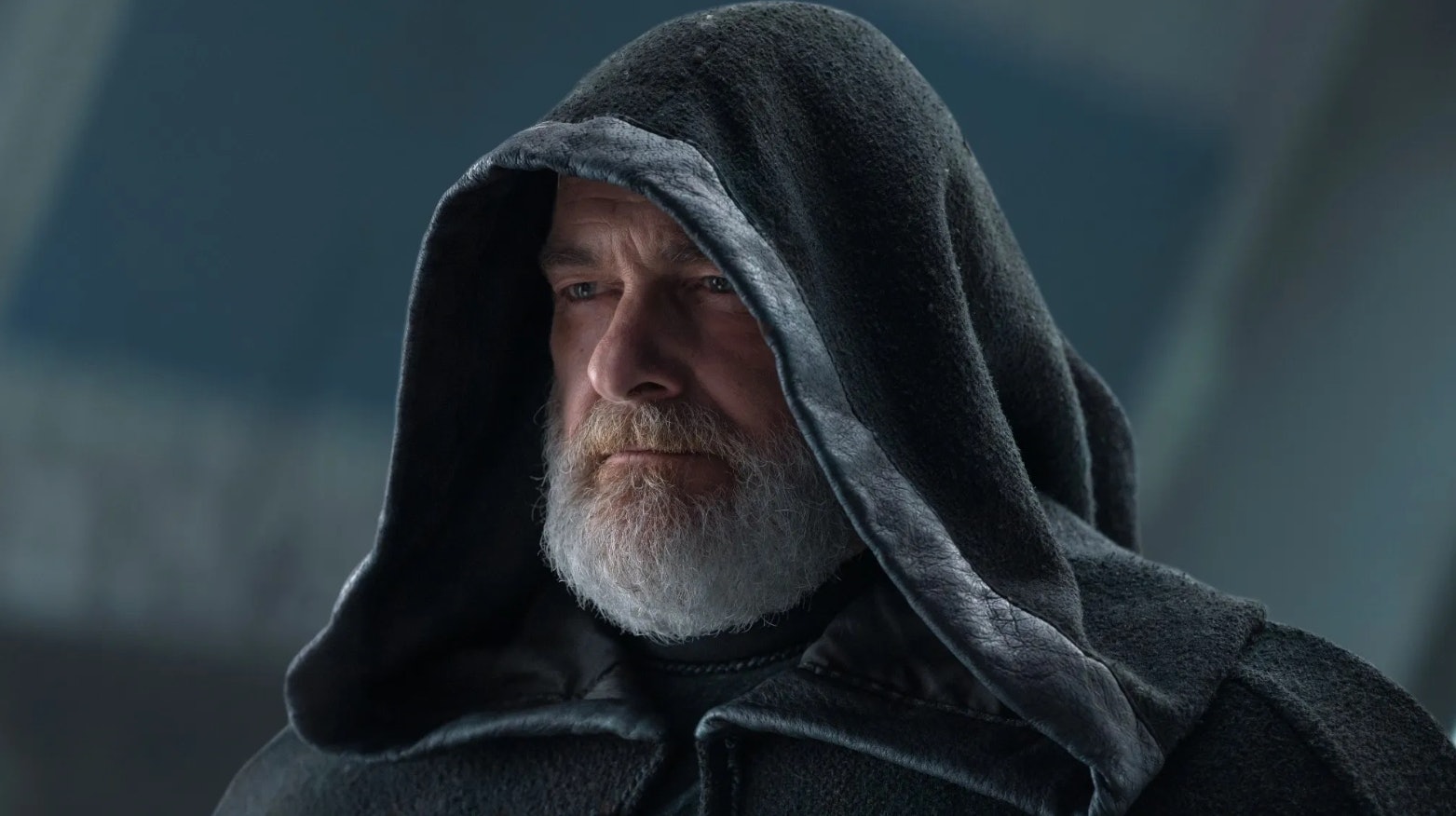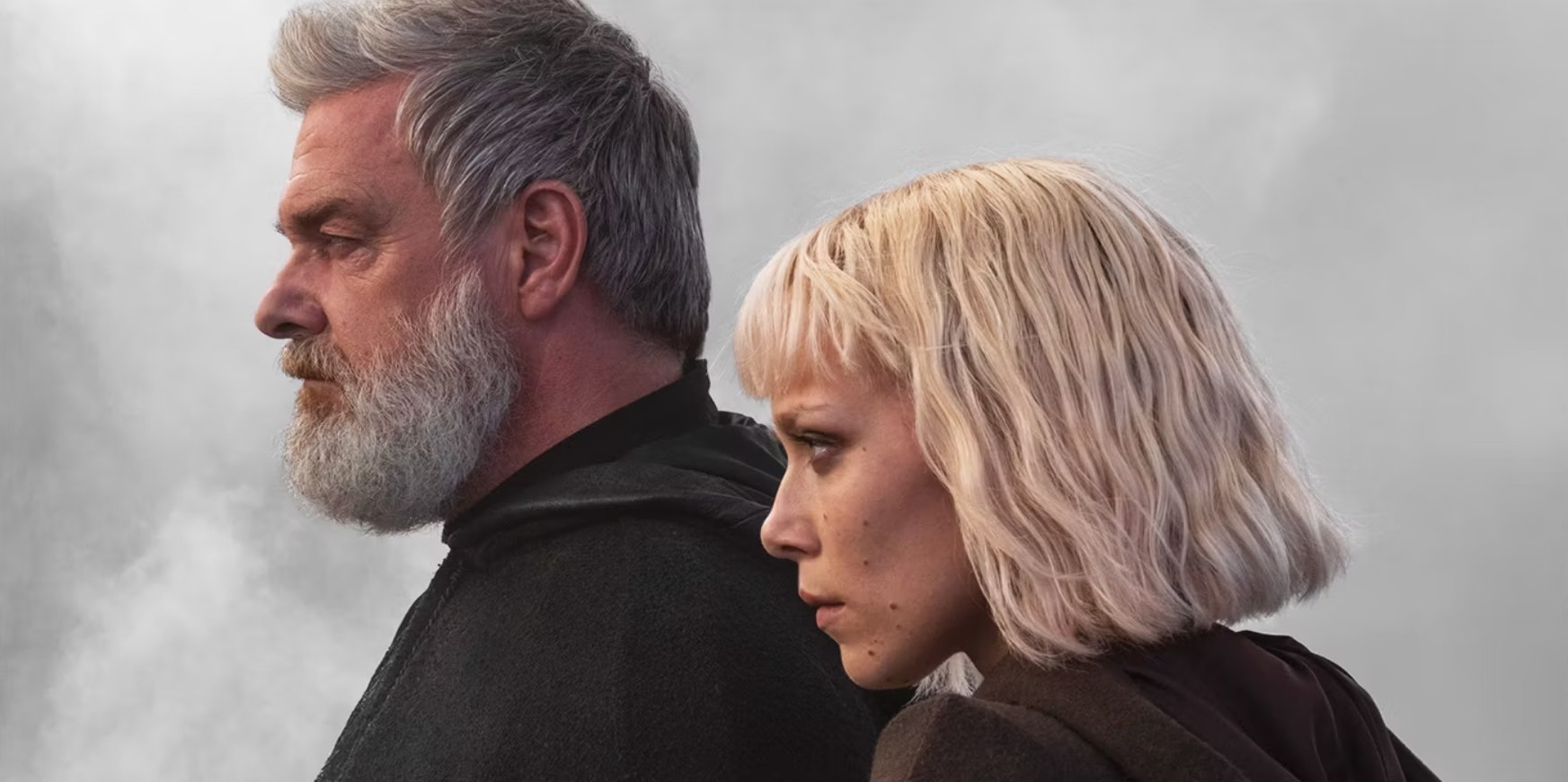
As Ahsoka reaches its halfway point, you’d be forgiven for wondering when the series’ Big Bad is going to show up. Much has been made of the return of Grand Admiral Thrawn (Lars Mikkelsen), who’s been stuck in a distant galaxy for a decade. The bulk of the series has been focused on the search for Thrawn, and while his presence looms large over Ahsoka, his absence is starting to get distracting.
The series’ latest episode, “Fallen Jedi,” picked up the slack by pitting Ahsoka Tano (Rosario Dawson) against Baylan Skoll (Ray Stevenson). After weeks of occasional badassery, Baylan was finally able to unleash the full scope of his power. His duel with Ahsoka was the irrefutable climax of the episode, but it’s the conversation they have before locking lightsabers that really made an impression.
Baylan’s skill with the blade isn’t the only thing on display in “Fallen Jedi.” The mercenary also revealed a key aspect of his philosophy, and why his motives align with Thrawn’s. “One must destroy in order to create,” he tells Ahsoka. Thrawn will inevitably start another conflict when he returns, and Baylan clearly wants to rebuild something in the aftermath. He’s very much a threat to everything that Ahsoka and her pals in the New Republic are trying to uphold, but does that actually make him a villain in the grand scheme of things? According to director Peter Ramsey, Baylan isn’t as evil as Ahsoka may have us believe.

Ramsey spoke to IGN following the premiere of “Fallen Jedi,” and shed some light on Baylan’s role in the series. While he’s certainly a menacing presence in Ahsoka, “the idea that he was evil or a bad guy was never part of the discussion.”
Stevenson portrayed the character with pathos for this very reason, and it was important that Baylan maintained a moral code. “He has an agenda,” Ramsey said, “and he has a belief system that he’s very rigorous and sincere about.” It’s just one that conflicts with Ahsoka and our other heroes.
“It’s what Baylan says in the episode: ‘I see things differently than you do. I disagree with your way,’” Ramsey continued. “He actually does believe he’s serving the greater good.”
Ahsoka showrunner Dave Filoni describes the character as a “medieval knight,” which inspired Stevenson to approach Baylan as “a person who was at peace with his own decision and had a real goal and a real philosophy and he wasn’t gonna betray it.” He’s very similar to Ahsoka in that regard, and it’s something they inadvertently bond over in “Fallen Jedi.”

While Ahsoka and Baylan are on different sides, they’re much more alike than the former might be willing to admit. Both spent years training with the Jedi Order, and both eventually chose to walk away. Ahsoka turned her back on the Order before she could finish her apprenticeship and become a knight, while Baylan appears to have remained faithful to the Jedi until the Purge wiped them out. Neither are Jedi now, but they’ve each held fast to the tenets they learned from them.
How Baylan’s philosophy brought him in line with the Dark Side is still a mystery Ahsoka will hopefully answer soon, but it’s one of the most interesting aspects of the series. Maybe Anakin’s turn to the Dark Side inspired his new dogma. If so, that would make him a compelling foil to Ahsoka, who continued on her path out of guilt over Anakin’s fate.
Either way, Baylan is Ahsoka’s most compelling antagonist. He’s been a great distraction from the tedious quest to recover Thrawn, and that’s not likely to change even when Thrawn finally returns. His conflict with Ahsoka fleshes out the battle between light and dark within a Jedi-less, Sith-less galaxy, adding shades of gray to a traditionally black-and-white world. The next episode will likely be dedicated to Ahsoka’s trippy reunion with Anakin, but Baylan is becoming increasingly important. In fact, he may be the single most important character moving forward, especially if his staunch philosophy starts to waver down the line.







